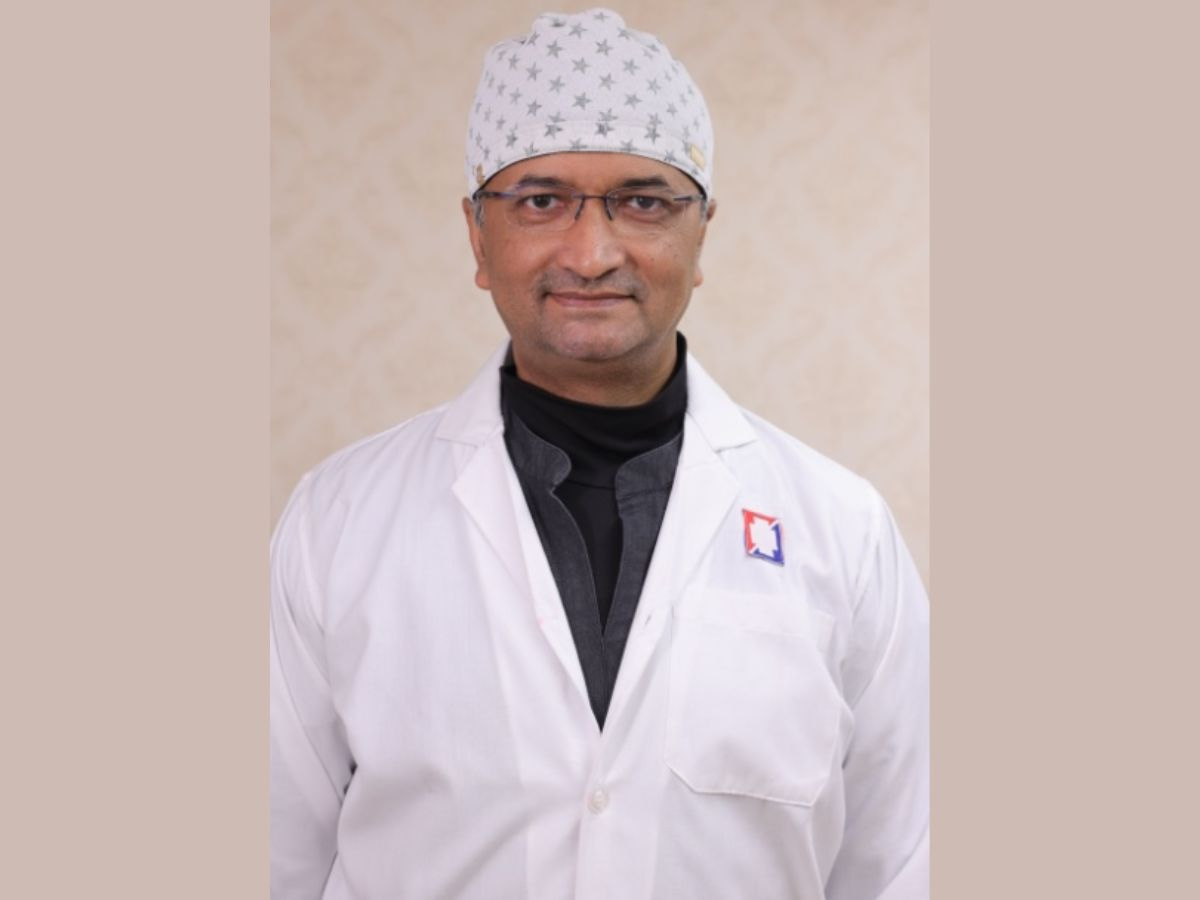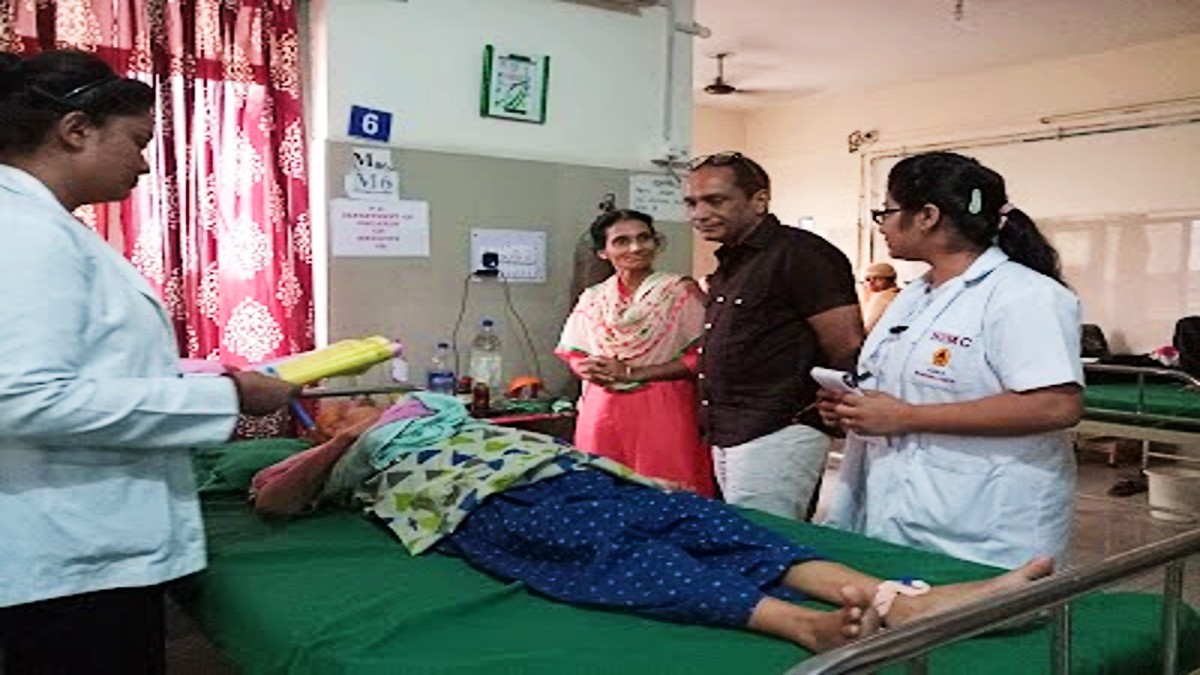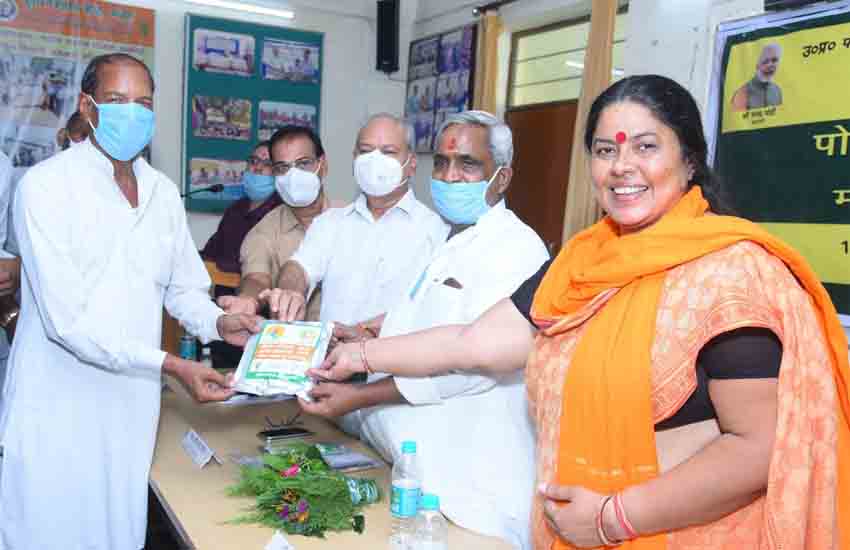Dr. Nikhilesh Das, M.B.B.S., M.S. (Orthopaedics), Consultant Orthopaedics, Peerless Hospital & BK Roy Research Center
New Delhi (India), May 8: AI is increasingly being integrated into various aspects of healthcare, including orthopaedic surgeries like knee replacements, Hip Replacement and Shoulder Replacement surgeries. While AI isn’t performing surgeries autonomously, it’s playing significant roles in preoperative planning, intraoperative guidance, and postoperative care.
Total knee replacement is done for irreversible damage to the cartilage of the knee joints leading to pain and progressive deformity. This alters the mechanical/physiologic alignment of the limbs.
In total knee replacement the alignment of the limbs is corrected and damaged joint surface is resurfaced with the help of conventional instruments taking reference from the patients’ bony landmarks.
Over the years, doctors started getting better at alignment with improved instruments. Achieving the perfect alignment improves the longevity of the implanted joint and function of the joint.
The aim of the surgery is to restore the mechanical alignment of the patient’s limb. HoloLens assisted cloud based system is an augmented reality system where a CT scan of the patients diseased joint and limb is done . A computer programcreated by ARTHRO 3D helps in calculating the appropriate alignment of that patient. When the surgeon is operating the HoloLens allows the surgeon to validate the cutswith superimposed bone models over the limb and achieve the desired alignment.
For the First time in Eastern India, Peerless Hospital introduces the Humanoid Robotics. Since August 2023 Peerless have done 61 Total Knee Replacement, 5 Total Hip Replacement and 2 Shoulder Replacements till date. HoloLens is a CT scan based augmented reality AI assisted technology which enables surgeons to achieve accurate 3D plan, with execution and validation of the bony cuts. This technology powered by Microsoft helps in achieving personalized alignment with the freedom to use the implant best suited for that particular patient. Robotic surgery on the other hand allows only specific implants that match that particular robotic make. Humanoid Robotics allows the surgeon the intra operative capacity vision of the whole limb during surgery. Since Humanoid Robotics is AI dependent it allows surgeons complete control in 3D planning and appropriate execution and customization thereby reducing computational errors to give the best patient solution.
The augmented reality helps to achieve the desired perfection with an aim towards improved function and longevity of the replaced joint.
Take away advantages for the patients-
Preoperative Planning: AI algorithms can analyse medical images like MRI or CT scans to provide detailed insights into a patient’s anatomy. This helps surgeons to plan the procedure more accurately, determining the optimal placement of implants and predicting potential challenges during surgery.
Intraoperative Guidance: During surgery, AI-powered navigation systems can assist surgeons in real-time by providing augmented reality overlays of the patient’s anatomy onto the surgical field. This helps them to precisely position instruments and implants, leading to more accurate outcomes. Customised implants and patient specific implants can be used. The time required for the surgery is less as compared to Robotic Surgery. The cost of the operation is patient friendly with equal or better precision than Robotic Surgery.
Postoperative Care: AI algorithms can analyse data from wearable devices or remote monitoring systems to track a patient’s recovery progress. By continuously monitoring parameters like gait, range of motion, and pain levels, AI can alert healthcare providers to any signs of complications early on, enabling timely intervention.
Overall, integrating AI into total joint replacement surgeries has the potential to improve outcomes, enhance surgical precision, and streamline postoperative care, ultimately benefiting patients and healthcare providers alike. However, it’s important to note that human expertise and judgment remain critical throughout the entire surgical process.
If you have any objection to this press release content, kindly contact [email protected] to notify us. We will respond and rectify the situation in the next 24 hours.




